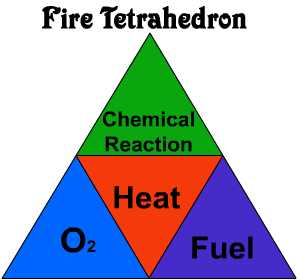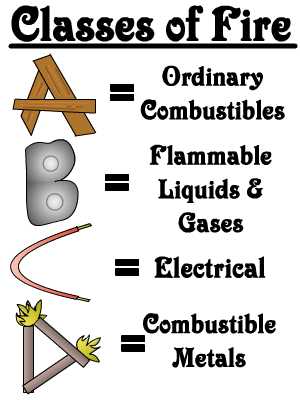|
So fire is bad, especially on a ship. Why? We've got no place else to go. Why else? Though water is abundant all around
us, bringing the water outside to the inside to fight a fire makes us sink, which is bad.
Things
to remember with shipboard fires:
-There are live wires everywhere, turn off power before opening up on
the hoses
-We float, therefore the more water you pump into the boat, the less we float
-Ship's are made of steel, steel
is conductive meaning that if something burns near a bulkhead, the bulkhead will heat up and could start a fire on the other
side.
-Not everything can be put out with water, CO2 and ABC extinguishers are more widely useful.
Spraying water on an oil fire often spreads the fuel and makes the fire worse.

Likely Spaces To Find Fire
-Machinery Spaces: lots of moving parts, lots of heat, lots of flammable liquids, lots of wires
-Fan rooms: lots of electricity and water, they don't mix well
-Paint lockers: many flammable liquids all stored in one spot
-Galley: grease burns well
-Staterooms: don't smoke in bed, don't smoke on the couch, don't smoke inside

The Fire Tetrahedron:
It used to be a triangle, but now it's kind of not, almost.
The four parts of the fire tetrahedron denote the requirements for a fire to keep burning. Taking away any of the parts
extinguishes the fire. Taking away more than one part more effectively extinguishes the fire.
The Parts:
-Oxygen: Fires need oxygen to combust, or breath. Can fire burn under water? Not typically. Why? There
is no O2 there. Some flares and combustible metals can burn under water because they burn so hot that
they actually pull O2 out of H2O.
-How to remove oxygen: CO2 systems displace O2 in a space, as does Halon.
Water works well, and acts to cool the fire as well, but remember, water is heavy and can cause the ship to flounder if too
much is pumped in. Simply closing the ventilation ducting to the burning space works very effectively at preventing more oxygen
from entering the space and should be the first step taken in containing a fire.
-Heat: Fires are hot... no shit. If you cool down the material that is burning, the fire may stop. Keeping
bulkheads and areas adjacent to the fire cool as well may keep the fire from spreading.
-How to cool a fire: Water, especially water mist, works very effectively at this because water can hold a lot
of heat. Spraying water on the floor of the space above the fire especially keeps fire from spreading vertically and burning
carpet, furniture, etc.
-Fuel: If there's nothing to burn, it won't burn. If you can break up the material that is burning (mattress,
wood pile, debris), or if you can remove the fuel source (close a gas valve), the fire will die down rather quickly.
-How to remove the fuel: If it is a Class A fire, a narrow stream from a fire hose will often act to break up
whatever is burning whether it be a pile of newspaper, wood, or a mattress. If a pipe has burst and gas is leaking out and
burning, shutting of the gas supply stops the flow and prevents further burning.
-Chemical Reaction: This is the new leg of the triangle. Fire/Combustion occurs sometimes as a reaction
between two or more chemicals. By isolating the chemicals from each other, the fire can be extinguished.
-How to isolate the chemicals: Dry chemical fire extinguishers are most effective at this as they coat and isolate
the chemicals that are reacting, often neutralizing them entirely. Depending on the chemical, other agents may also be used
to neutralize the reaction.
Back To Deck Skills
|
 |
|
|
|
 |
|

Classes of Fire:
-A: Ordinary combustibles like wood, paper, fabric, etc. Best extinguished by removing heat and blocking
fuel source with water or ABC fire extinguishers.
-B: Flammable liquids and gases like oil, gas, grease, paints and thinners, etc. Best extinguished by
removing oxygen through use of CO2, halon, foam, or dry chemicals.
-C: Electrical equipment like generators or parts like wires or fuses. First step in extinguishing is
closing off power to the site, which will remove the initial sparking. Best extinguished by removing oxygen, fuel, heat, with
CO2 or halon as they won't leave any residue behind afterward, which will aid in cleanup.
-D: Combustible metals such as magnesium best extinguished on a ship by simply tossing whatever is burning
overboard. This stuff burns at several thousand degrees and will burn a hole through the hull, best thing to do is get rid
of it.

What to do in the event of a fire:
1. Let someone know; pull a fire alarm, call the bridge, let some officer (primarily the Chief Mate,
Captain, or Chief Engineer) know so that steps can be taken. If fire found while in port at CMA pier, notify CWO and Night
Mate immediately, and Watch Engineer/Night Engineer if possible.
2. Make sure all personnel have evacuated space safely, and all personnel have evacuated the ship and
are standing by safely organized on the pier.
3. If it can be done safely, try to contain or extinguish the fire, though only after sounding some
form of alarm.
4. Close vents, shut off power, remove source of whatever is burning (gas, etc.)
Note: Your primary responsibility as the person who discovered the fire is to notify others. The ship has a fire plan
which will be put into effect once the discovery is made. After your report is made, you are to assist as directed in most
cases, unless your station bill says otherwise.

Types of Heating:
-Radiation: Fire is simply hot. Anything near fire heats up because it receives thermal radiation from
the fire. Thermal radiation is transferred without a medium like convective heating.
-Convection: Fire heats the air around it. This air moves through ventilation ducting and heats other
spaces, possible causing them to catch fire as well.
-Conduction: Fire heats anything it touches. If there is a fire near a bulkhead, or if welding is being
done on some part of the ship, whatever is on the other side of the bulkhead or object may be heating enough to catch fire.
A fire watch should be stationed on both sides of a bulkhead when welding to it.
|
 |
|
|
|

